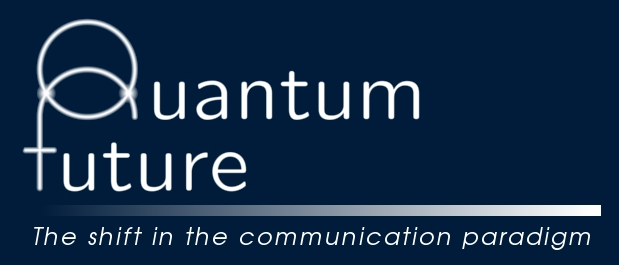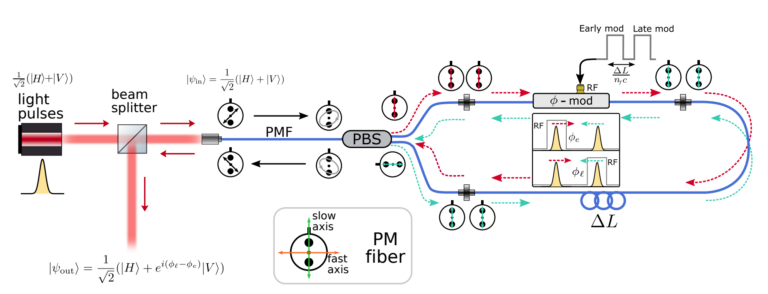
Polarization-encoded free-space Quantum Communication requires a quantum state source featuring fast polarization modulation, long-term stability and a low intrinsic error rate. Here we present a source based on a Sagnac interferometer and composed of polarization maintaining fibers, a fiber polarization beam splitter and an electro-optic phase modulator. The system generates predetermined polarization states with a fixed reference frame in free-space that does not require calibration neither at the transmitter nor at the receiver. In this way we achieve long-term stability and low error rates. A proof-of-concept experiment is also reported, demonstrating a Quantum Bit Error Rate lower than 0.2% for several hours without any active recalibration of the devices.
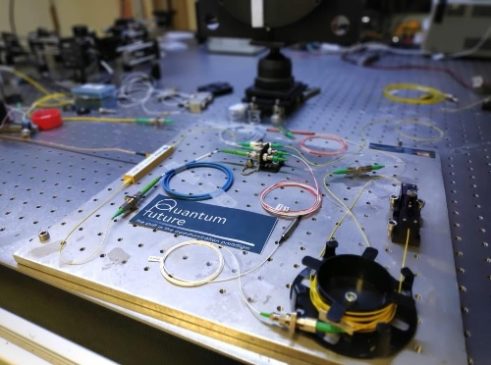
Quantum key distribution (QKD) allows distant parties to exchange cryptographic keys with unconditional security by encoding information on the degrees of freedom of photons. Polarization encoding has been extensively used for QKD along free-space, optical fiber, and satellite links. However, the polarization encoders used in such implementations are unstable, expensive, and complex and can even exhibit side channels that undermine the security of the protocol. In our recently published manuscript (Agnesi et al. Opt. Lett 44(10) 2398 (2019); https://doi.org/10.1364/OL.44.002398) we propose and test a new polarization encoder: the POGNAC (for POlarization SaGNAC). The POGNAC combines a simple design and high stability reaching an low intrinsic quantum bit error rate. Since realization is possible from the 800 to the 1550 nm band using commercial off-the-shelf devices, our polarization modulator is a promising solution for free-space, fiber, and satellite-based QKD.
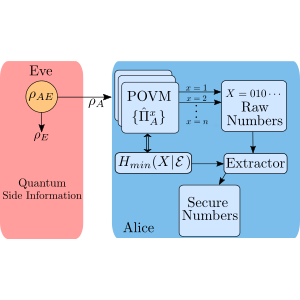
Random numbers are commonly used in many different fields, ranging from simulations in fundamental science to security applications. In some critical cases, as Bell's tests and cryptography, the random numbers are required to be both secure (i.e. known only by the legitimate user) and to be provided at an ultra-fast rate (i.e. larger than Gbit/s). However, practical generators are usually considered trusted, but their security can be compromised in case of imperfections or malicious external actions. In this work we introduce an efficient protocol which guarantees security and speed in the generation. We propose a novel source-device-independent protocol based on generic Positive Operator Valued Measurements and then we specialize the result to heterodyne measurements. The security of the generated numbers is proven without any assumption on the source, which can be even fully controlled by an adversary. Furthermore, we experimentally implemented the protocol by exploiting heterodyne measurements, reaching an unprecedented secure generation rate of 17.42 Gbit/s, without the need to take into account finite-size effects. Our device combines simplicity, ultrafast-rates and high security with low cost components, paving the way to new practical solutions for random number generation.
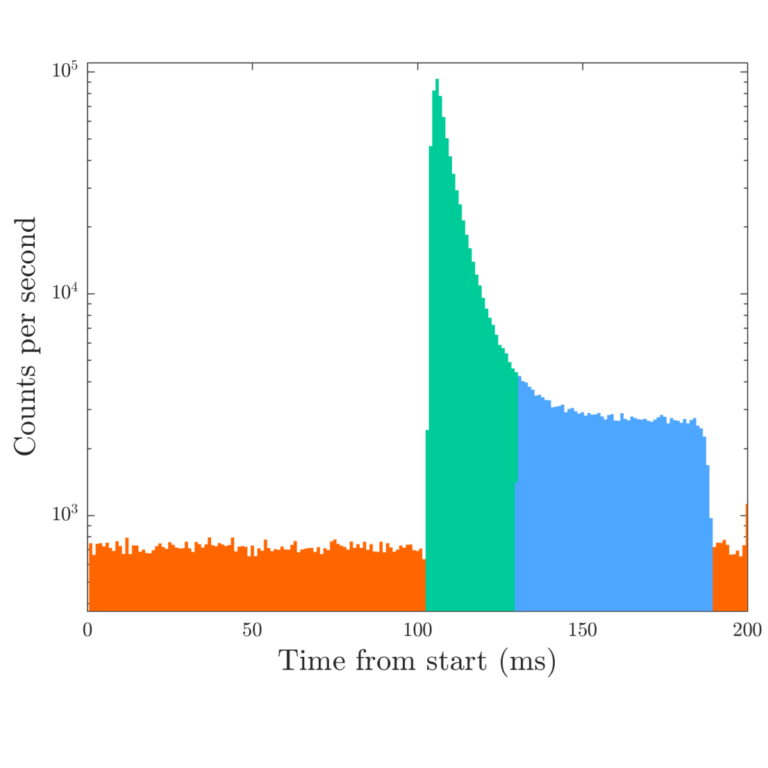
Satellite-based quantum communication is an invaluable resource for the realization of a quantum network at the global scale. In this regard, the use of satellites well beyond the low Earth orbits gives the advantage of long communication time with a ground station. However, high-orbit satellites pose a great technological challenge due to the high diffraction losses of the optical channel, and the experimental investigation of such quantum channels is still lacking. Here, we report on the first experimental exchange of single photons from Global Navigation Satellite System at a slant distance of 20000 kilometers, by exploiting the retroreflector array mounted on GLONASS satellites. We also observed the predicted temporal spread of the reflected pulses due to the geometrical shape of array. Finally, we estimated the requirements needed for an active source on a satellite, aiming towards quantum communication from GNSS with state-of-the-art technology.
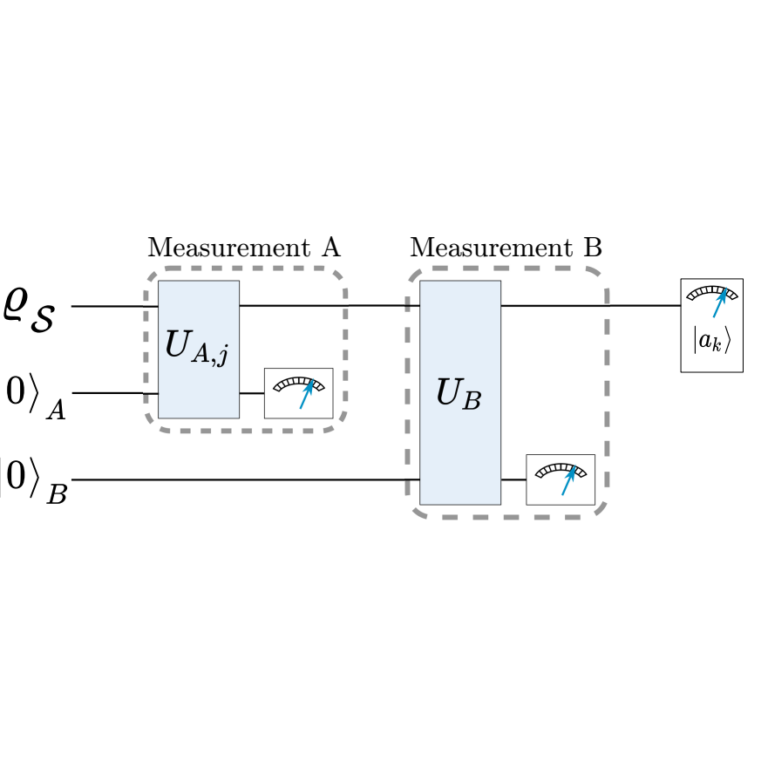
New techniques based on weak measurements have recently been introduced to the field of quantum state reconstruction. Some of them allow to directly measure each matrix element of an unknown density operator and need only d+1 different couplings between the system and the measuring device, compared to d2 in the case of standard QST for the reconstruction of an arbitrary mixed state. However, due to the weakness of these couplings, these protocols are approximated and prone to large statistical errors. We propose a method which is similar to the weak measurement protocols but works regardless of the coupling strength: our protocol is not approximated and thus improves the accuracy and precision of the results with respect to weak measurement schemes. We experimentally apply it to the polarization state of single photons and compare the results to those of preexisting methods for different values of the coupling strength. Our results show that our method outperforms previous proposals in terms of accuracy and statistical errors.

Entanglement is an invaluable resource for fundamental tests of physics and the implementation of quantum information protocols such as device-independent secure communications. In particular, time-bin entanglement is widely exploited to reach these purposes both in free-space and optical fiber propagation, due to the robustness and simplicity of its implementation. However, all existing realizations of time-bin entanglement suffer from an intrinsic post-selection loophole, which undermines their usefulness. Here, we report the first experimental violation of Bell’s inequality with “genuine” time-bin entanglement, free of the post-selection loophole. We modify the setup by replacing the first passive beam-splitter in each measurement station with an additional interferometer acting as a fast optical switch synchronized with the source. Using this setup we obtain a post-selection-loophole-free Bell violation of more than nine standard deviations. Since our scheme is fully implementable using standard fiber-based components and is compatible with modern integrated photonics, our results pave the way for the distribution of genuine time-bin entanglement over long distances.
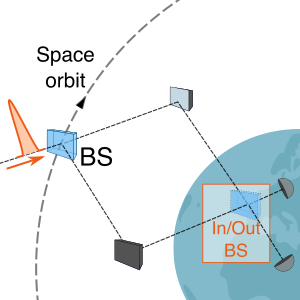
One of the most surprising and counterintuitive aspects of Quantum Mechanics is the wave-particle duality, more precisely the impossibility of describing the fundamental elements of nature exclusively as waves or as particles. In fact, Quantum Mechanics requires all elementary particles to be treated contemporaneously as waves and as particles, but forbids both characters to be observed simultaneously. In 1978 John Archibald Wheeler conceived a Gedankenexperiment, or thought-experiment, that takes the implications of Quantum Mechanics to the extreme, demonstrating that a classical description would lead to a seeming inversion of the normal order of time and thus a violation of the causality principle. Building upon the results of our research group in Satellite Quantum Communications and as part of the collaboration between the Matera Laser Ranging Observatory of the Italian Space Agency, we published a manuscript (Vedovato et al, Sci. Adv. 2017;3:e1701180) where we perform the first satellite version of Wheeler’s Gedankenexperiment. By exploiting the polarization degree of freedom and the temporal modes of photons reflected by satellites in a low Earth orbit, we demonstrated the necessity of the quantum treatment in the hostile space environment. Furthermore we have paved the way for further tests and applications of quantum theory in Space.
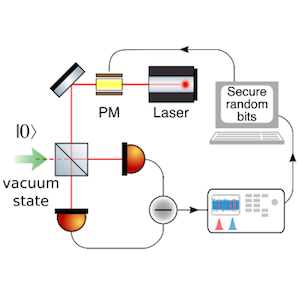
Measurements of the electromagnetic vacuum fluctuations allowed the generation of random numbers at a gigabits per second rate and with an enhanced security level with respect to the state-of-the-art quantum random number generators (QRNG). Random numbers, employed in any cryptographic algorithm, are of paramount importance for security applications. It is well known that physical systems and processes governed by quantum mechanics feature intrinsic non-deterministic behaviours that can be used to generate unpredictable random numbers. With respect to the QRNG state-of-the-art, in this work we designed and realized a novel protocol able to merge an enhanced level of security with an ultrafast rate of generation. The protocol is resilient against an extreme class of “guessing attacks”. Such attacks indeed contemplate the worst case scenario, in which an adversary is able to control the generator quantum source itself, the so-called semi-device-independent (SDI) framework. In our protocol, the Heisenberg Uncertainty Principle is used not only to generate the random numbers, as most of the previous QRNGs do, but also to secure them by erasing any guessing advantage an extremely resourceful adversary might achieve. By applying the SDI approach to the measurement of the vacuum fluctuations of the electromagnetic field, we give an experimental demonstration of secure random number generation at a rate of gigabits per second. Such a result is obtained by employing commercially available hardware and could be easily improved to reach rates of tens of gigabits per second. This novel scheme is able to provide unpredictability at the highest levels, while keeping low the setup complexity and achieving a generation rate able to satisfy the even growing demand of ultrafast streams of secure random numbers.
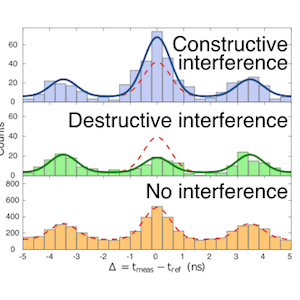
Interference of quantum objects has been a key ingredient in the description of microscopic world since the early development of Quantum Theory. Testing the predictions of Quantum Mechanics in Space, over distances larger and larger, allows to extend its validity limits on a scale at which it was originally not meant for. Furthermore, exploiting quantum technologies in Space could have great implications for secure communications at global scale and for testing Einstein’s gravitation one more time. Here, we demonstrated interference at the single-photon level along optical links between the Matera Laser Ranging Observatory (Italian Space Agency) and different satellites thousand kilometers away. Two short pulses of light delayed by few nanoseconds are sent to the satellite which bounces them back to Earth where they are collected at the single-photon level because of the long journey. At the reflection the satellite introduces a phase-shift between the two pulses, due to its relative velocity respect to the ground station. When the photons are temporally recombined at the receiver, they interfere accordingly to the modulation imposed by the satellite motion.
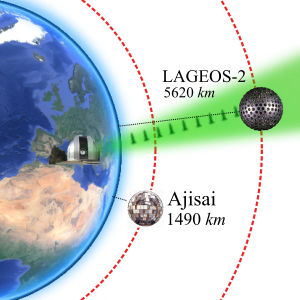
The unprecedented single photon exchange with a MEO satellite range was annoucend in a manuscript posted in Sep. 2015 in the ArXiv with number [arXiv:1509.05692] by Daniele Dequal, Giuseppe Vallone, Davide Bacco, Simone Gaiarin, Vincenza Luceri, Giuseppe Bianco, and Paolo Villoresi. The satellite distance was more than 7000 km to the ground station at the Matera Laser Ranging Observatory. The single photon transmitter was realized by exploiting the corner cube retro-reflectors mounted on the LAGEOS-2 satellite. Long duration of data collection is possible with such altitude, up to 43 minutes in a single passage.

